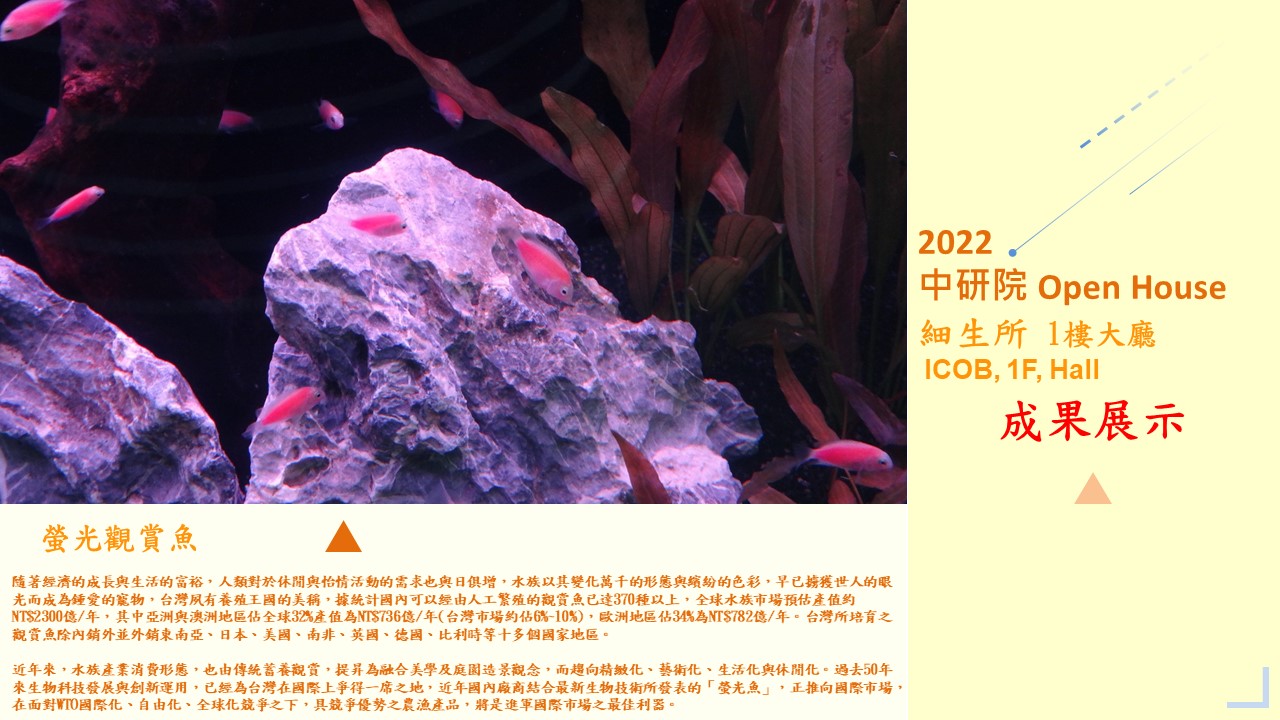Ornamental fish is a high economic value industry. Estimated every year the ornamental fish trade is over billion dollars (US dollar). The 95% ornamental fish live in salt water was capture from the sea. The 90% ornamental fish live in freshwater was capture from the aquaculture. The biotechnology would be put to use on aquarium fishes was inevitable. Taikong corporation produced three kind of fluorescent fish in Medakas. In the world, it is only from Taiwan that GM fishes are commercially available to the aquarium trade, involving not only green fluorescent protein, but also other genes from other organisms.
A tilapia (Oreochromis niloticus) myosin light chain 3 (Mlc3) promoter region (~4.3 kb) was
isolated and characterized. Sequence analysis of the clone revealed high similarity with a
tilapia gene encoding the Mlc3 promoter region, exon 1, and intron 1. Deletion of a region of
the tilapia Mlc3 promoter (801 to -3,881 bp) enhanced promoter activity, as determined by direct
injection of a luciferase reporter construct into skeletal muscle of Archocentrus
nigrofasciatus. These findings suggest that the region between -801 and -3,881 bp may contain
negative regulatory elements. Stable germline transgenic strains of the ornamental fish species
A. nigrofasciatus var. carrying the Taiwan coral red fluorescent protein (TcRFP) driven by the
Mlc3 promoter were established. F1 adult transgenic A. nigrofasciatus var. exhibited brilliant
pink fluorescence in skeletal muscles in the daylight. Therefore, our current study demonstrates
the feasibility of using the tilapia Mlc3 promoter to drive fluorescence in new fish species,
such as Perciformes.
